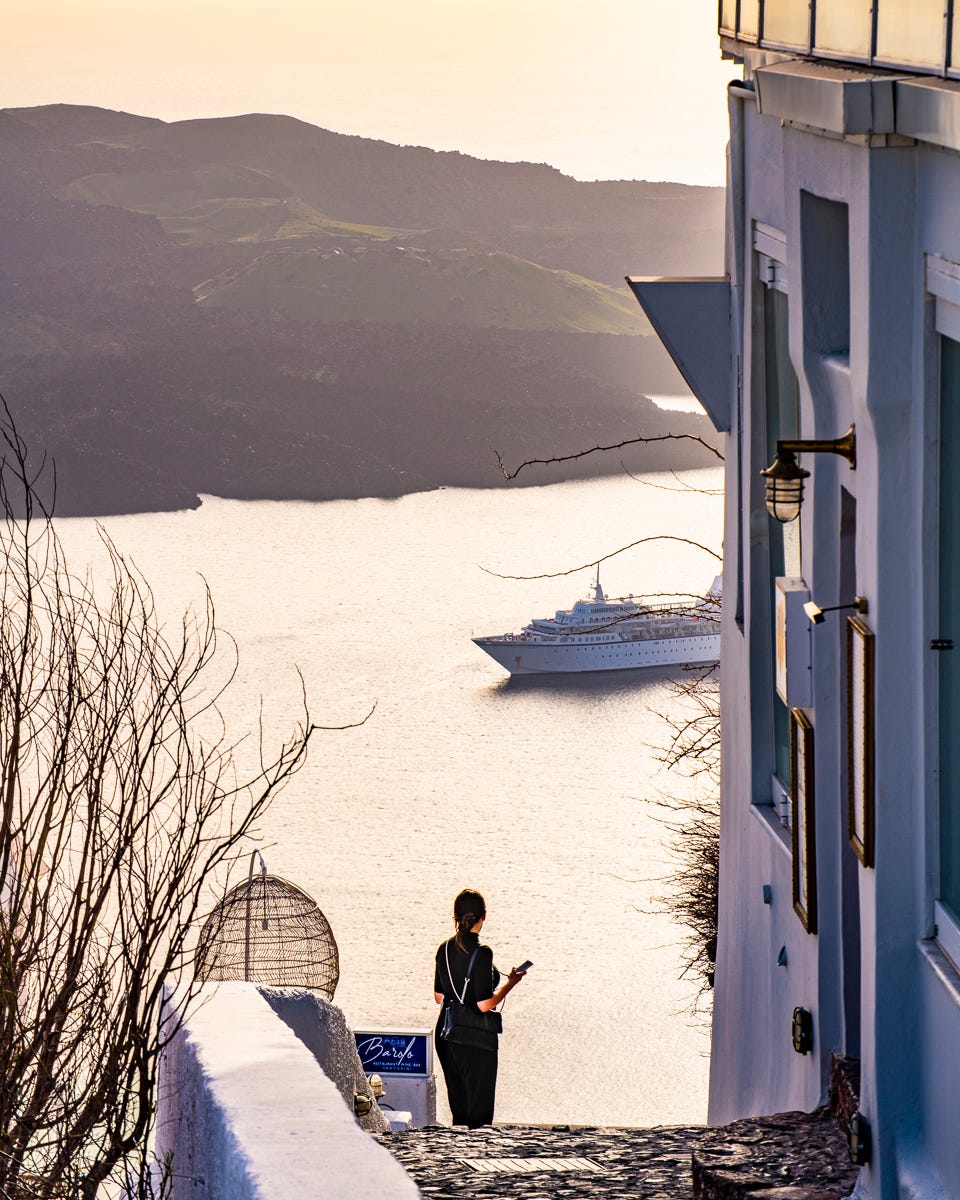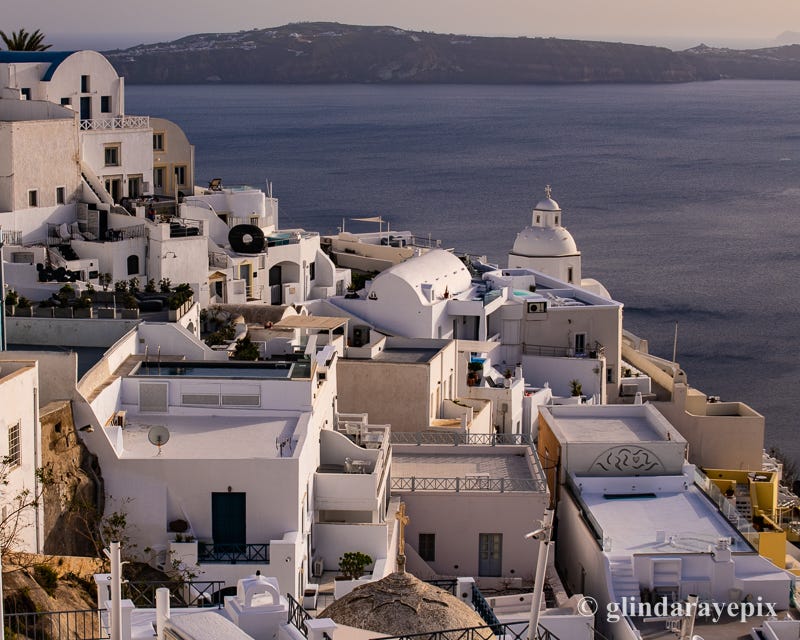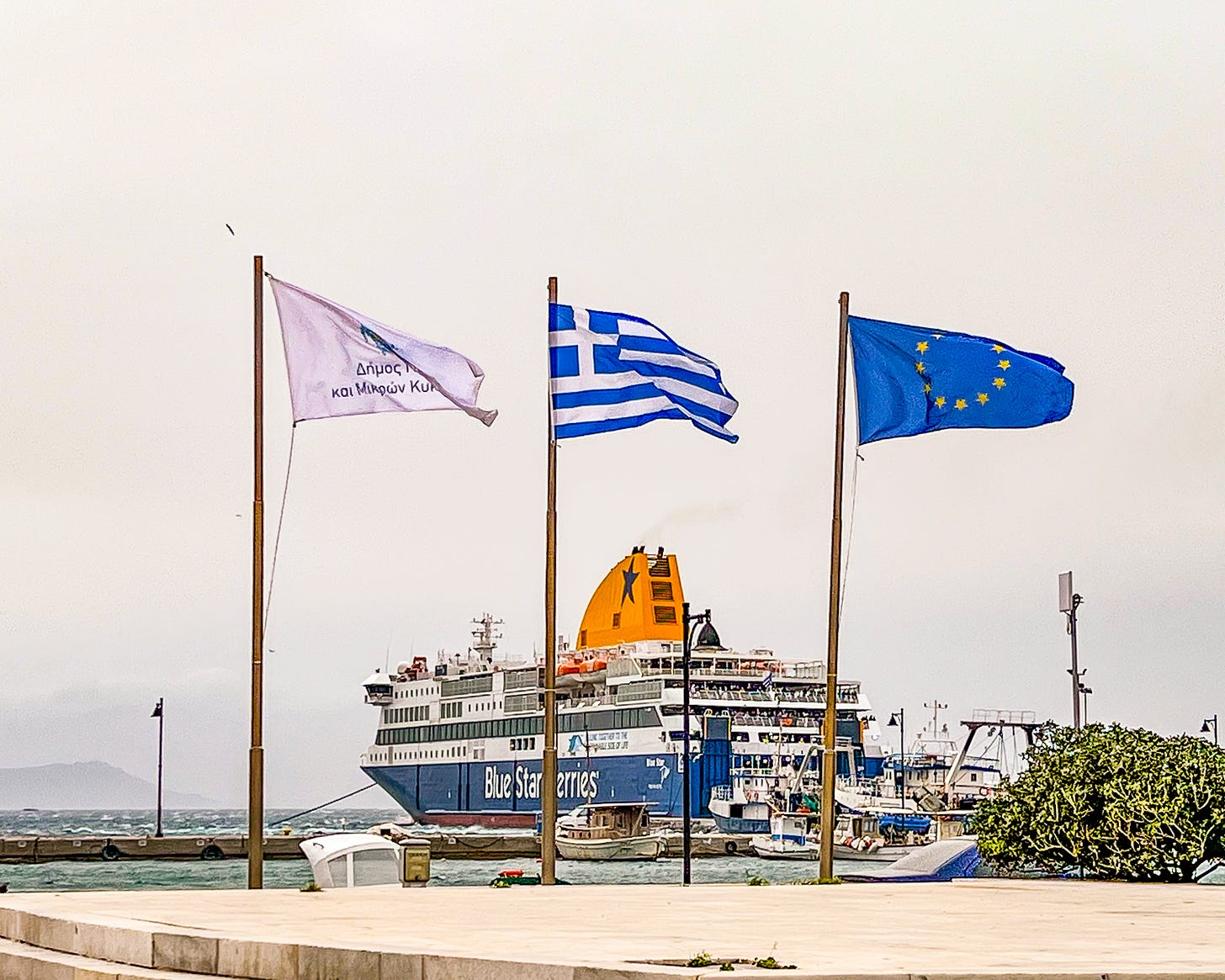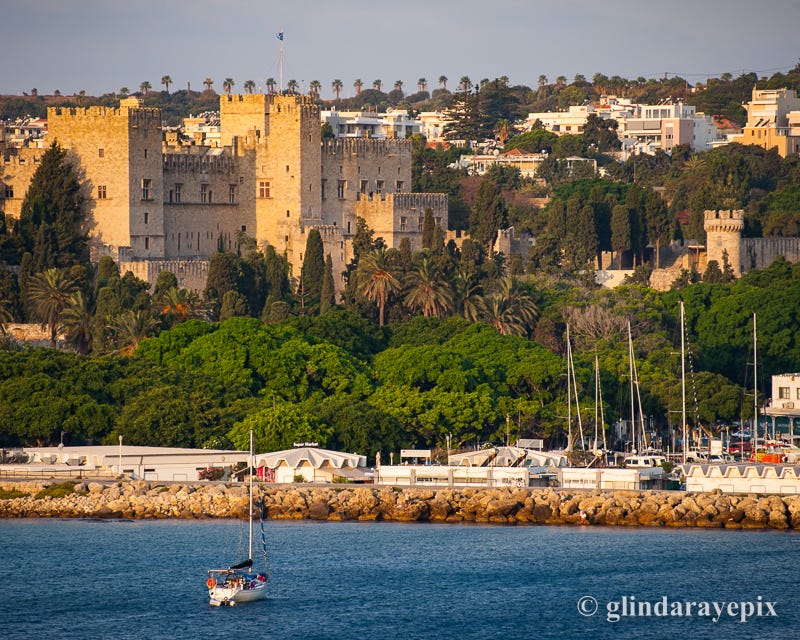We’re pretty sure Greek Island-hopping is a sport for penniless, energetic youth with long, scruffy hair, anorexic eating habits, worn-out backpacks, and threadbare jeans. As an activity, it feels more like hitchhiking than private luxury jet travel. Yet on our recent Greek adventure, we only ran into two other couples who were as hard at it as we were, and they shared both our age and relatively benign economic circumstances.
On this trip, we hopped five legendary Aegean islands in twelve days—Naxos, Paros, Santorini, Mykonos, and Tinos. No reservations, no plans, one ferry and walk-up hotel room at a time. April was the perfect month for it too, a little chilly, but empty before the Easter tourist onslaught. Greeks are chatty anyway, but with so little going on, people had nothing better to do than tell us their life stories.
We took as our prototype for the Greek Island-hopper the mythic Odysseus from the ancient Homeric epic, The Odyssey. After the fall of Troy, sometime around 2500BC, Odysseus took ten years to cross the Aegean in a voyage that should have lasted a month or two. This was the Heroic Age, when gods and monsters roamed the earth, full of random surprises for any intrepid voyager who crossed their paths. Odysseus never lost sight of his ultimate goal—a return to Ithaca and the arms of his clever, gorgeous, ultra-faithful wife Penelope—but along the way, took on the wild, arbitrary challenges that life threw at him and somehow found a way through each of them.
Thanks to the superb ships of Blue Star Ferries and the guidance of the iPhone Ferry Hopper App, our voyages caused us far less stress than Odysseus and his crew endured. But as experiences go, our twelve days overflowed with unexpected little bits of serendipity.
A handful of the stories we lived (and heard) along the way:
Naxos:
A gazillion years ago, the beautiful Princess Ariadne of Minoa was abandoned on the shore here by her escort Theseus (a long story). A passing sailor spotted her, fell in love, and settled in to farm the island. One day, he found a new type of vine that aimlessly crawled the ground, but had climbed into and nearly choked off a lone fig tree. The sailor loved his figs, so he cut back the vine, whereupon it began to sprout copious bunches of ultra-sour green fruit. As the fruits ripened in the blazing summer sun, they turned a lush purple, and the juices inside began to ferment into an irresistible alcoholic drink.
Thus the origin of the wine trade. All manner of sin and debauchery followed and elevated the sailor, Dionysius, to the status of a deity. We went looking for the god of pleasure in the sleepy mid-island village of Filoti, but all we found were some of his finest wines and the fiery absinthe the locals bottle as Kitro.
Paros:
Somehow, in the fiery geological soup that produced the Aegean, a massive hunk of staggeringly pure, almost translucent marble erupted from the waters opposite Naxos. No one knows much about the history of the exquisite Venus de Milo (currently resident in the Louvre Museum of Paris), but you can still find the quarry she came from on the northern end of this island. Parian marble is one of those exotic world-class standards that no one has been able to attain anywhere else.
And speaking of impossible standards and exquisite beauty, Paros was the home of the legendary saint of the Greek Revolution, Manto Mavrogenous. This wealthy woman died penniless here in 1848 after giving her life and all of her riches to the cause of Greek independence from the Ottoman Empire. You can still find her modest, private home on Paros Port.
Fira/Thera (Santorini):
The loudest sound ever recorded by human instruments was the 310 decibels, registered in 1883 during the eruption of the Indonesian island of Krakatoa. Yet sometime around 1650BC, the volcano that formed Santorini might have been three times as loud. The pressure wave circled the earth multiple times and utterly destroyed the Minoan civilization on the island of Crete (120 km away). Massive piles of volcanic rock created exotic new islands all over the Aegean Sea.
Today, the semi-circular island of Santorini represents half of the caldera—or volcano rim—from that catastrophe, with steep, black precipices shooting out of the sea and topped by a long, curving string of whitewashed villages. If you want to offend the locals, use the Venetian name for the island, Santorini—otherwise call it Thira or, if you must, the Anglo version, Thera. To really impress people, stick to the local name, Fira. It's not as complicated as it sounds.
Mykonos:
Even more than the honeymooner’s paradise of Fira, this rock in the middle of nowhere exists almost entirely for the entertainment of foreigners. Its main attraction—miles of hyper-organized beaches lined with chaises-lounges, many of them clothing optional—would hardly catch the notice of a southern California beach bum. And when eating out here, you have to work hard at escaping the tourist industry. Our hotelier, for example, directed our attention to the many fine restaurants on the harbor—but when we returned full of simulated outrage at her choices, quickly made good with an out-of-the-way local hangout serving a dinner we won’t soon forget.
The best thing about Mykonos, apart from the easy sex with foreigners—not something we were looking for—is the bars. Mykonos is the only place in all of Greece (as far as we know) where you don’t have to teach the bartender how to make a true American martini. And that must count for something.
Tinos:
At 11:30 AM, the local boats hadn’t come in with the daily catch (the “big fish”), so the owner of our favorite tavern, ΑΓΚΥΡΑ, hoped we could make do with tiny grilled pilchard and deep-fried anchovies (both headless, thank the gods). We added the classic Greek dip, Tzatziki (sour cream-garlic-herbs-more garlic), and he threw in a thick, native herring paste for good measure. We were too early in the season for the local Assyrtiko, a spectacular white wine served young and chilled, but he had a few bottles left over from the prior year. So we spent a couple of hours watching the storms and ferries come and go, until it was our turn to return to Athens and the real world.
Bucket Lists:
There are thousands of islands in the Greek archipelago, around 200 of them inhabited and worth a visit. We’ve now knocked off just seven, but we have friends who’ve visited two per year for the last twenty-odd years. Each island is entirely unique in its history, topography, and people, but for purposes of island-hopping can be loosely grouped into:
East—Aegean Sea to Turkey.
South—Mediterranean Sea around Crete.
West—Ionian/Adriatic Seas opposite Italy.
We usually sail out of Piraeus, the harbor outside of Athens, but you can just as easily ferry out of Patras in Western Greece, Istanbul in Turkey, or Brindisi in Italy. For travelers who like to hyper-organize their trips into check lists of palaces and monuments with the least time wasted in between, this probably isn’t the vacation for you. But if you want to bring down your blood pressure while meandering through 4,000 years of random, serendipitous, occasionally true, but always fascinating history, welcome to the islands.
You might just refuse to leave.













These are such delightful anecdotes. My husband and I visited Hydra this summer--it’s less than 2 hours by ferry from Athens, making it a very easy trip! We loved it so much that we want to go back next year, but we might have to try some of these islands instead...